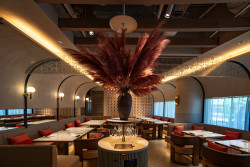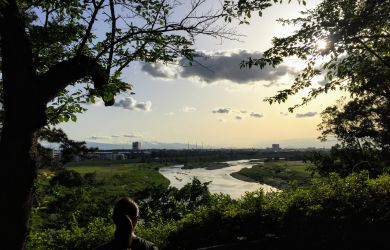
October 1, 2009
Artifact
Originally published on metropolis.co.jp on October 2009 If someone asked you to design an artifact that would cause a splash among Japanese historians, you’d be hard pressed to come up with anything better than the pair of folding screens recently unearthed in Niigata. The six-panel byoubu depict 16th-century Emperor Go-Yozei paying a visit to the […]
By Metropolis
Originally published on metropolis.co.jp on October 2009

Courtesy of the Joetsu City Museum
If someone asked you to design an artifact that would cause a splash among Japanese historians, you’d be hard pressed to come up with anything better than the pair of folding screens recently unearthed in Niigata. The six-panel byoubu depict 16th-century Emperor Go-Yozei paying a visit to the castle of the warlord Hideyoshi Toyotomi in Kyoto. In November, a local resident approached officials at the Joetsu City Museum and asked them to authenticate the pieces, which measure 3.6m x 1.5m and are believed to have been painted shortly after the events depicted. After the museum determined the screens to be genuine, Japanese historians could barely conceal their glee. And with good reason: Toyotomi’s castle was dismantled in 1592, just eight years after its completion, and remarkably few contemporary depictions exist. What’s more, the paintings illustrate slice-of-life scenes like “children trying to catch dragonflies.” “This work will be indispensable in discussing Hideyoshi in the future,” art historian Hiroyuki Kano gushed to the Asahi Shimbun. “It is a painting that should be carried in history textbooks.” The screens will be on display at Joetsu City Museum through Sunday, October 4.
Joetsu City Museum
Sources: IHT/The Asahi Shimbun; The Daily Yomiuri







